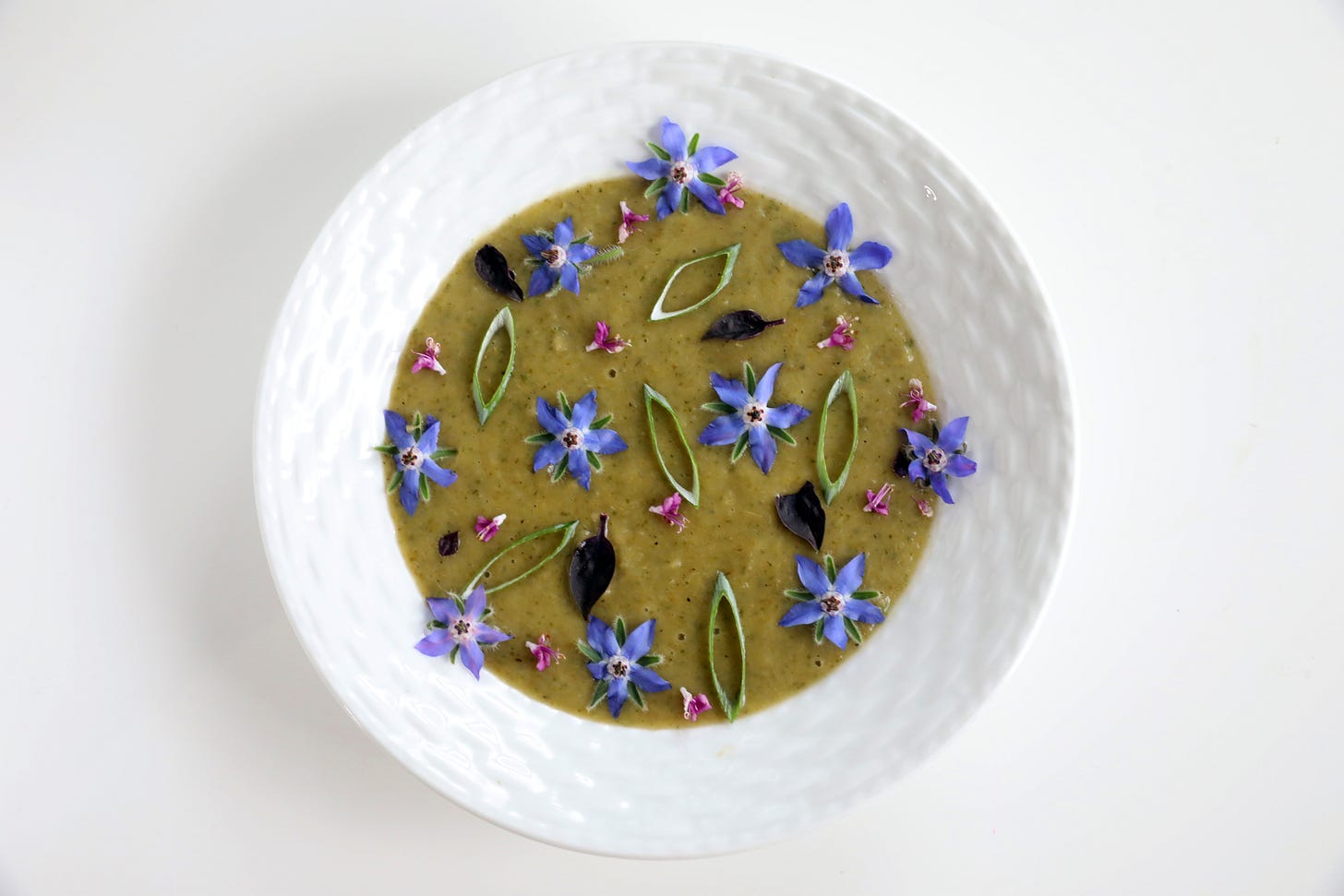Remember that snapper fillet that I used to make the brandade? The skin had picked up some nice color from roasting, and while rubbery it still had a lot of flavor left to give (the cats certainly thought so when I gave them each a little piece). So I figured I’d make a quick dashi with it. Dashi is the mother stock in Japanese cuisine. It’s traditionally made with katsuobushi, fillets of bonito that are cured, smoked and dried until they’re rock hard (they’ll break like ceramic if dropped). They’re thinly shaved on special tools that look like a block plane and the shavings are then steeped in hot water with kombu. The fish and seaweed are both potent sources of glutamates, so that the resulting broth delivers massive amounts of umami.
Dashi is the primary reason why so much traditional Japanese food is able to be so subtle and yet so powerfully satisfying. For example, take a dish of sliced daikon, simmered in dashi that is then lightly thickened with a little starch so that it naps the radish with an enticing gloss. The ingredients in this hypothetical dish are dashi and radish, basically, with a little salt (in the form of soy sauce, say) and maybe a dash of mirin for acidity. Yet thanks to the dashi, a dish like this eats much better than the meager ingredients would suggest, with tons of depth and a slightly smoky note that almost hints at bacon.
So if you’re not familiar with dashi, try making some. You can easily buy kombu and pre-shaved bonito, so you don’t have to invest in the katsuobushi kit. Other versions of dashi are made with dried sardines, or anchovies, or shiitake mushrooms, also good sources of glutamates and all easily available online or at Asian markets or health food-type stores.
I make dashi the old-school way, but given my nature I’m always open to riffing. So I made a snapper-skin dashi using the roasted skin, a piece of wild-harvested kombu that I brought back from Brittany (dried seaweed adds almost no weight to your luggage, as opposed to tinned fish), and a couple of dried shiitake that my logs produced last year. I held this mixture at a not-quite simmer for about half an hour, then turned off the stove and let it sit for another hour or so.
The broth is tasty, very much so, and while it’s far from traditional it definitely packs a bunch of umami into a deceptively pale liquid. It’s also got a nice bit of viscosity, thanks to all the gelatin in the skin—a bonus that the official version does not provide. I got about a quart of it from the fillet. I’ve written before about the great utility of having stock on hand at all times. In these harvest-oriented days, especially now that the evenings are cooling down, being able to bang out some soup in about 10 minutes is super appealing.
This one, which featured some peak produce from the garden, did not disappoint. As the title suggests, it’s a riff on vichyssoise, but with a couple of summery tweaks (no dairy!) and the inclusion of a plant that I’ve grown for years but which I only recently realized has a notably fish-friendly flavor. Adding that to this soup turned out to be a masterstroke, because it connected the snapper skin dashi to the vegetables in a deep and seamless way that was kind of astonishing.
Keep reading with a 7-day free trial
Subscribe to Things On Bread to keep reading this post and get 7 days of free access to the full post archives.



